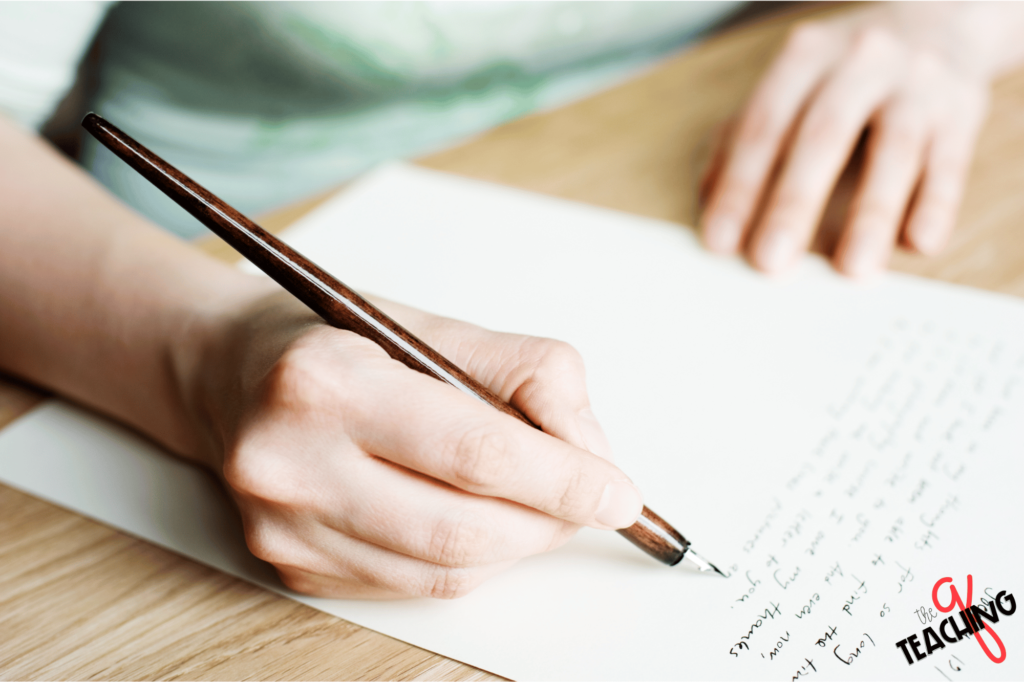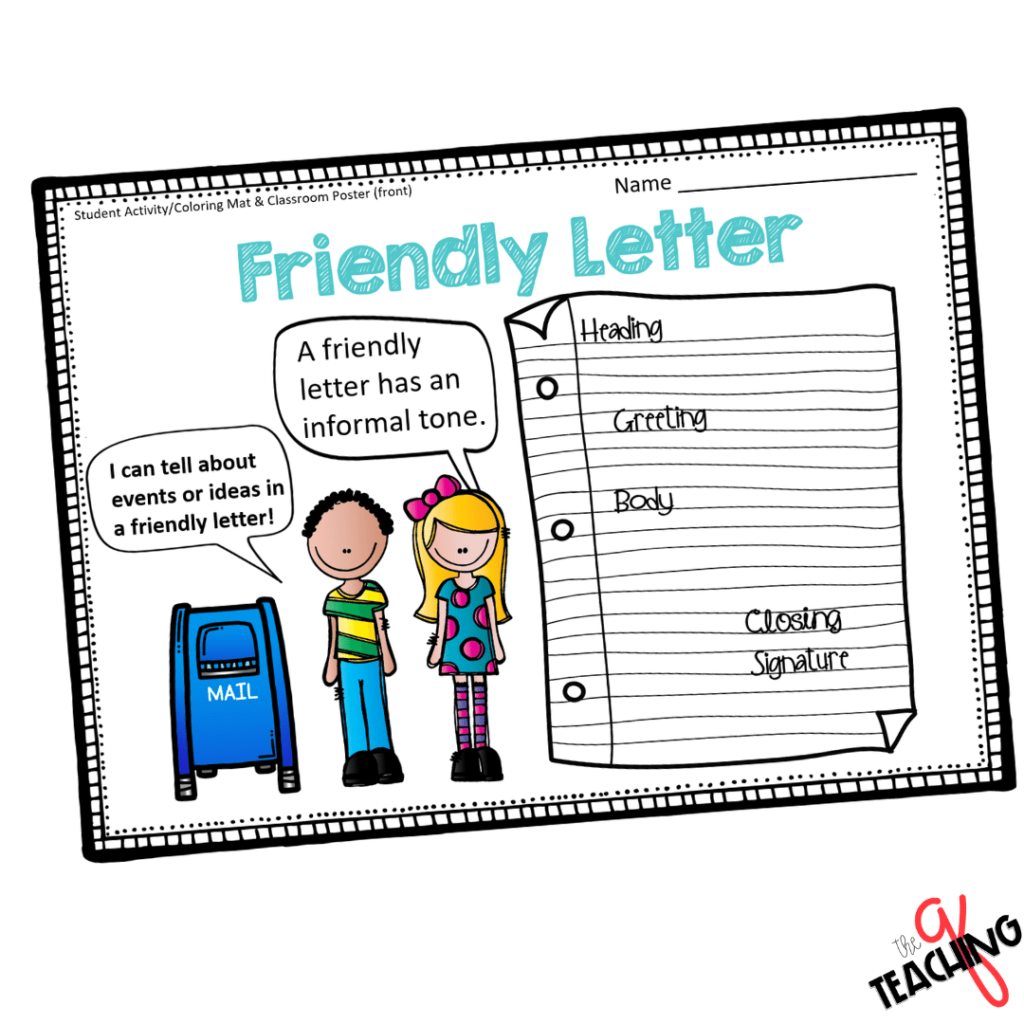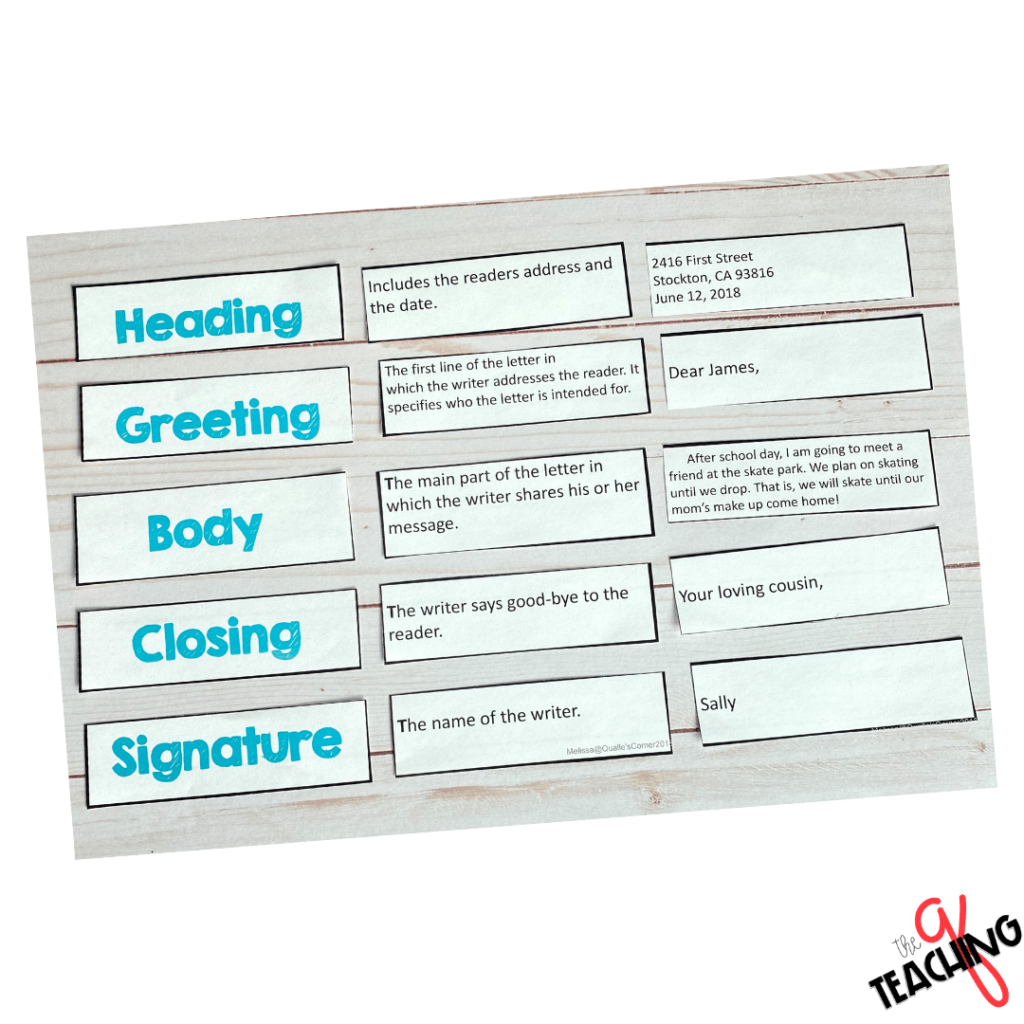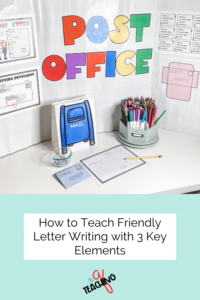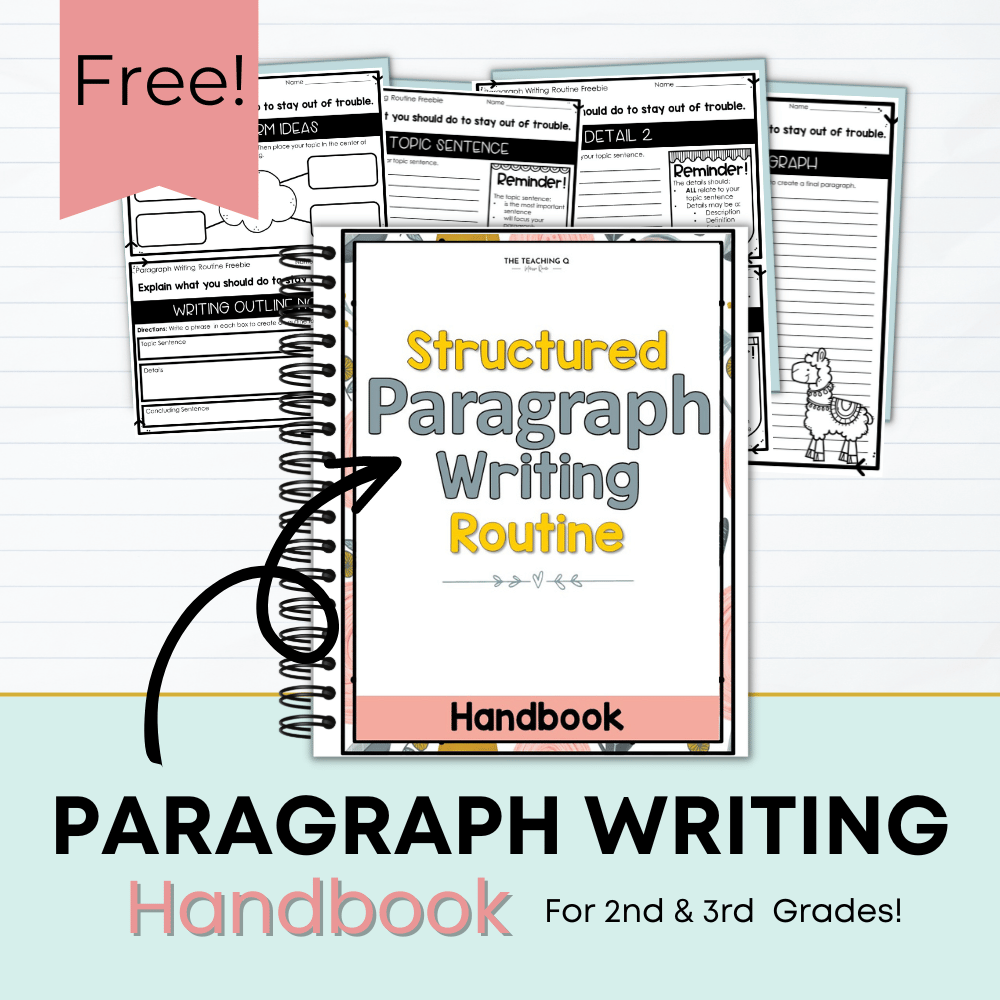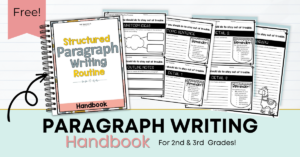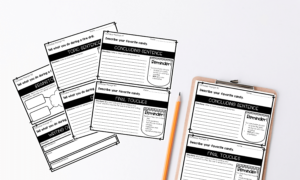Are you a teacher looking to hook students on writing? If so, I’d love to share how to teach friendly letter writing with three key elements to make a lasting impression.
I have a question for you to ponder.
Many say this is true because written words last for ever while spoken words diminish. I just happen to agree.
A Personal Example
As I reflect on my childhood, I remember idolizing my sixth-grade teacher. Yes, I really think pre-teens look up to adults more than they let on. As for me, it was no secret. I told everyone who would listen. Mrs. Brody had cream-colored skin, long shining brown curls, and elegance. Not only was she beautiful, but she rode horses! Could anyone be more perfect?
This is the “perfect” teacher in my eyes who took a shy, timid girl without self-esteem and slowly but steadily provided her with all the reassurance possible.
Although this teacher surely must have said kind remarks here and there, she wrote a letter that changed the game.
The gist of the letter stated that I was capable of my dreams. Me? Capable of MY dreams?
Finally, the letter became something cherished, protected, and most of all, contemplated. The writing, lasting… a lifetime.
Take a moment and think about the power written word has had on your life.
Before we discuss how to teach friendly letter writing to our class, let’s think about our why.
Why teach friendly letter writing?
I have two answers.
You should teach friendly letter-writing skills to cover just about every grade level standard when writing letters.
Friendly letter writing covers both, content and convensions.
Also, depending on the prompt you provide, the letter-writing may require the descriptive, explanatory, opinion, or personal narrative writing.
Take a close look at the Second Grade Common Core Writing Standards or any other grade level or standards, and you will see that a considerable amount of the standards easily check off standards during a friendly writing unit.
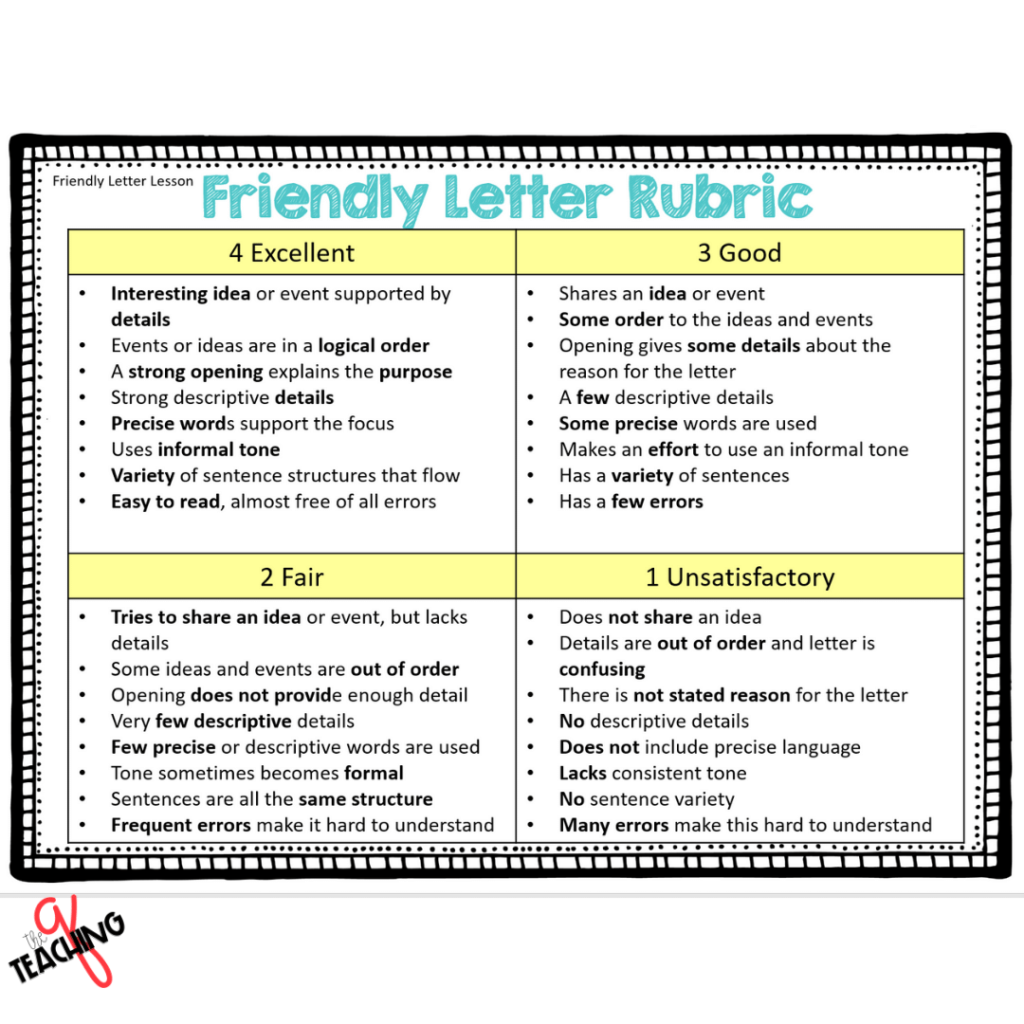
Here’s a common friendly letter writing rubric to support the claim above.
Second, letter writing is extremely motivating. When using a friendly writing unit in your classroom, the purpose of letters changes. Instead of the pictures with a one-liner written beneath a picture, students learn to write complete letters containing a quality message with the occasional picture thrown in.
Last, Download my FREE Friendly Letter & Post Office Kit to motivate your kiddos to write today.
Now we can address the how.
Parts of a Friendly Letter
The first step in how to teach friendly letter writing is to teach the parts of a letter. Yes, you’re going to want to make sure students are explicitly taught the following terms:
- Heading-address and date
- Greeting- the first line, tell who the letter is for
- Body- the main part of the letter with a message
- Closing- the writer says goodbye to the reader
- Signature- the name of the writer
Then, explain each part of the letter, create an anchor chart. Anchor charts are great to support students throughout the writing unit. Students become less and less dependant on the chart.
Next, introduce the Color Code the Text Activity. The activity allows opportunities to identify parts of a Friendly Letter.
Friendly Letter Writing Practice
First, students use an anchor text to practice identifying parts of a friendly letter. The teacher and students read the text aloud. Next, students color each part of a friendly letter in a different color of highlighter. A student may feel the need to reference the Friendly Letter Writing Anchor Chart during the practice.
If you are using a print version, the teacher will need to provide 5 colors of highlighter. When completed digitally, the students drag and drop the color highlight over the text.
Also, another option is to complete the activity in pairs or as a whole class with plenty of student discussion.
Last, as students become increasingly more comfortable with the parts of a friendly letter, an extension game may be played.
I call the game, Parts of a Friendly Letter Match-Up (I know, fancy, right?)
Then, the teacher provides a set of cards where students match the part of the friendly letter vocabulary term to its kid-friendly definition to play the game. (That’s all. Nice and easy.)
To create the game, label each part of a Friendly Letter on an index card. One label per card. Then write one definition on each card. (Viola! You have a match-up game.)
Scaffolded Materials for Friendly Letter Writing
Scaffolded materials in the second key element in how to teach friendly letter writing. Since you need paper and a writing instrument, you will provide a scaffold for the letter-writing skill to support students.
The first support is a writing paper with the headings marked in each spot of the friendly letter.
Then, when students are comfortable with the support, you transition into the second stage. The next paper has only dots to indicate where words should begin. Last, remove the labels from the writing paper.
Finally, students transition to writing letters on lined or blank paper without the supports. Place the paper in the Friendly Letter Writing Mail Station.
Download the FREE Friendly Letter & Post Office Kit.
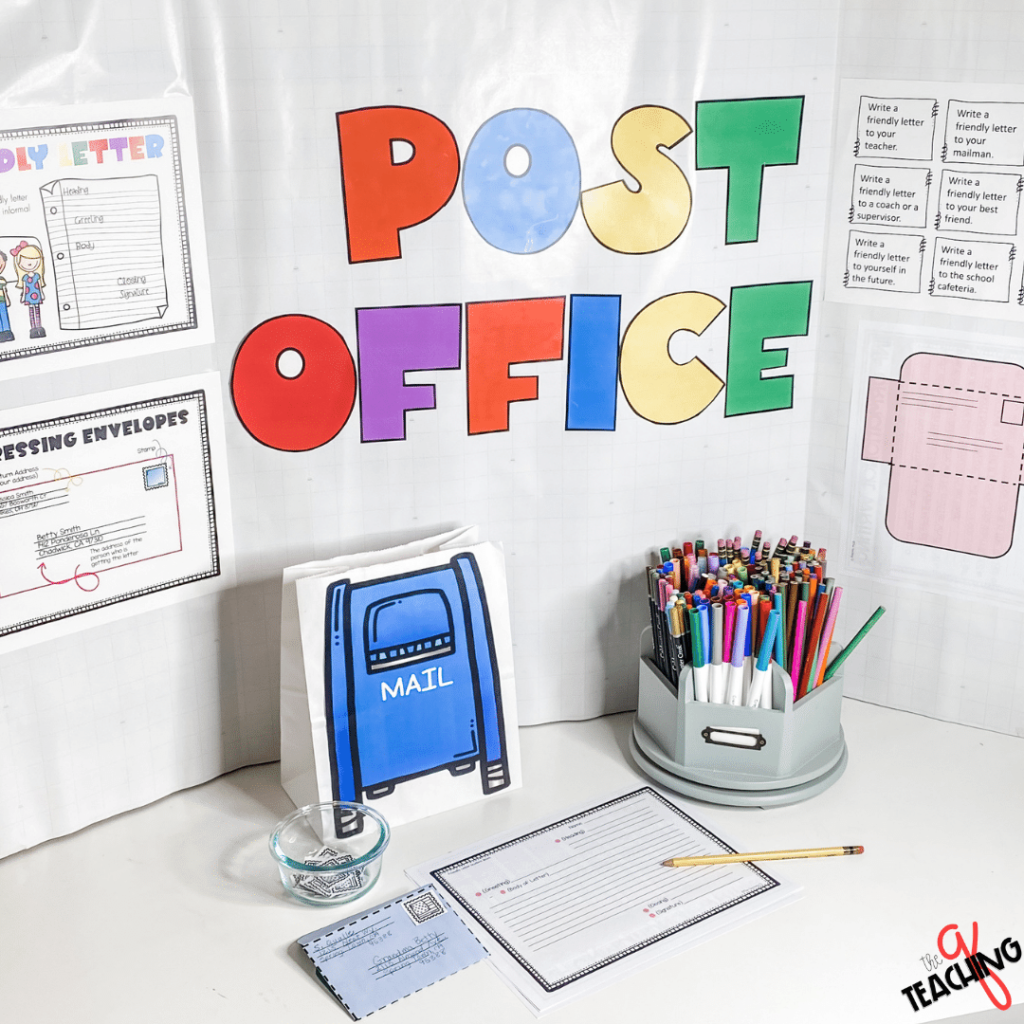
Publish with Purpose
The third step in how to teach friendly letter writing is to provide a real-life purpose for letter writing.
Then, brainstorm occasions students may want to write a friendly letter. It’s a good idea to post the list in the classroom for students to access throughout the day.
Finally, as students write friendly letters, they can “mail” the letter in our mailbox. Yours truly becomes the mailman.
So, I have a FREE Friendly Letter & Post Office here. Let me provide you with everything you need to keep your student’s writing!
Also, an option is to connect with another class and become pen pals. (Now we’re talking!)
When students write friendly letters, they extend themselves, make connections, and expand their learning.
What do you say, are you ready to write through friendly letters? Or how about Class Pen Pals?
Are your students struggling and making very little progress in writing? Or maybe they’re unmotivated or a reluctant writer? If so, I’ve got your back.
Yes…I…Do!
Let me share my secret sauce when it comes to teaching writing to elementary students.
It’s the Sentences, Paragraphs, and Essays: OH, MY! E-book.
Click this link to learn more about how the E-Book can transform your students’ chicken scratch, hap-hazard writing into strong, effective, glorious writing!
–Melissa

